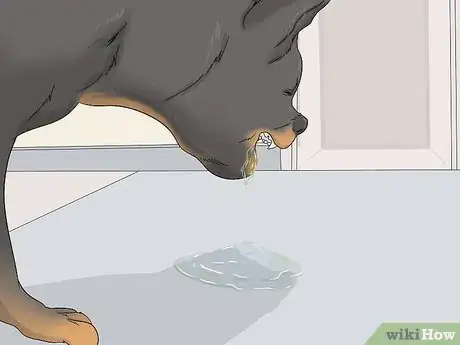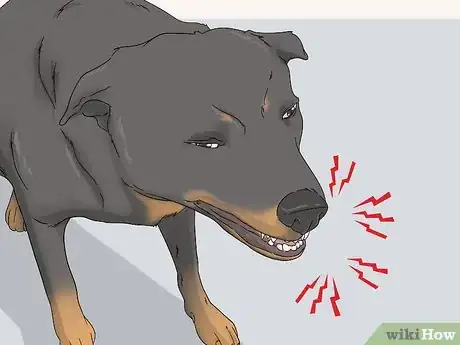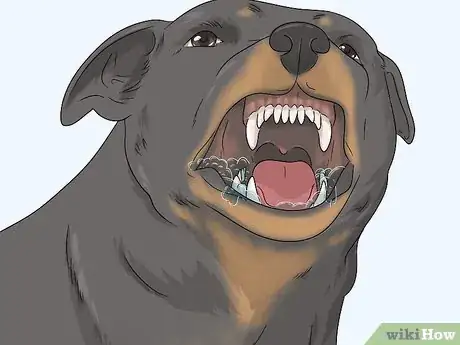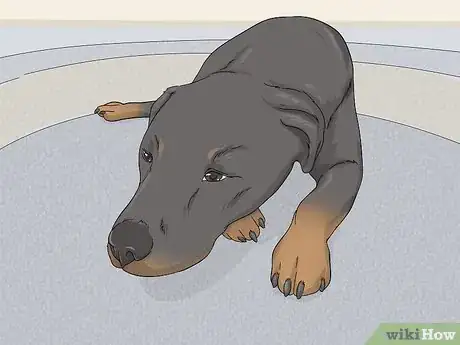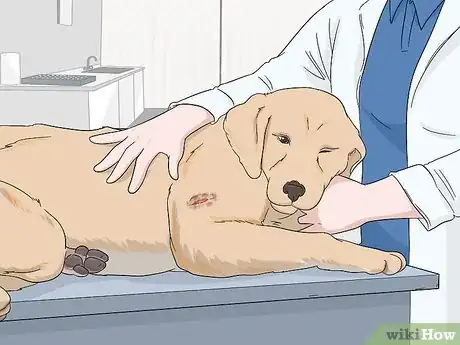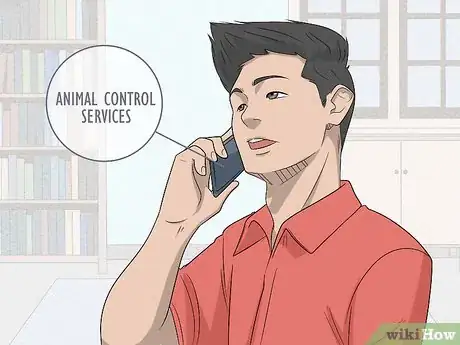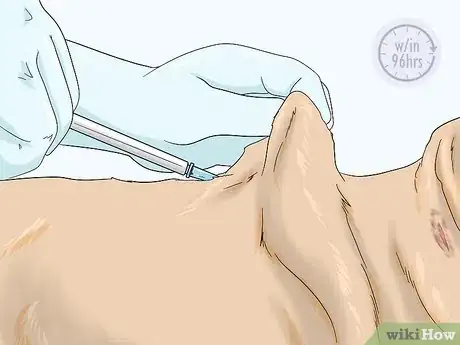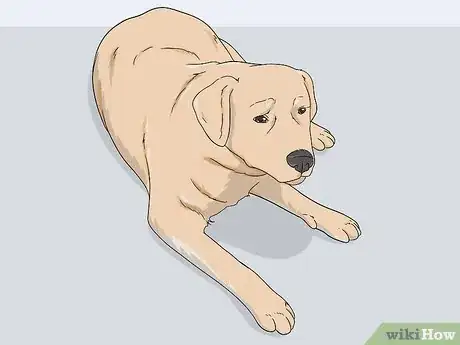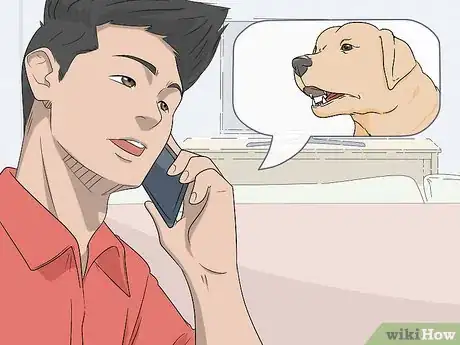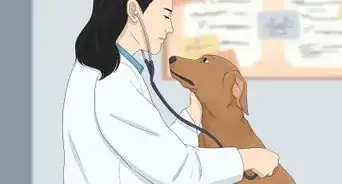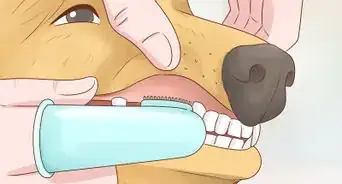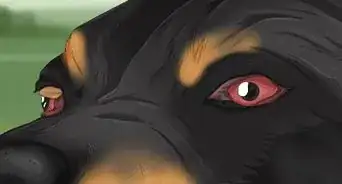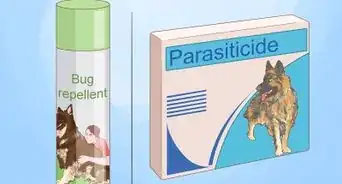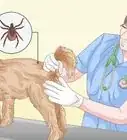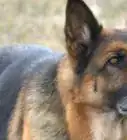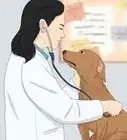This article was co-authored by Ray Spragley, DVM. Dr. Ray Spragley is a Doctor of Veterinary Medicine and the Owner/Founder of Zen Dog Veterinary Care PLLC in New York. With experience in multiple institutions and private practices, Dr. Spragley’s specializations and interests include non-surgical management of cranial cruciate ligament tears, Intervertebral Disk Disease(IVDD), and pain management in osteoarthritis. Dr. Spragley holds a BS in Biology from SUNY Albany and has a Doctor of Veterinary Medicine degree (DVM) from Ross University School of Veterinary Medicine. He is also a Certified Canine Rehabilitation Therapist (CCRT) through the Canine Rehab Institute as well as a Certified Veterinary Acupuncturist (CVA) through Chi University.
There are 8 references cited in this article, which can be found at the bottom of the page.
This article has been viewed 22,648 times.
Rabies is a virus that affects the nervous system of humans and animals. Dogs that spend a lot of time outside are at risk for it because rabid animals transmit the disease through biting. Sadly, there is no definitive test for rabies on a living animal. The only concrete test is taking a brain sample from an animal that’s already been euthanized. Your best chance for keeping your dog healthy is getting immediate medical help for your dog if they’ve been bitten by an animal, and then monitor their behavior for rabies symptoms. With early intervention, you can prevent your dog from spreading the disease to others.
Steps
Spotting Signs of Rabies
-
1Look for signs of general malaise and illness in your dog. The early signs of rabies look like other illnesses. Your dog may seem lethargic or depressed. They may also vomit, have diarrhea, or refuse to eat. This phase lasts 2-3 days before symptoms progress.[1]
- Contrary to popular belief, dogs often don’t experience a fear of water when they have rabies. This is a symptom of rabies in humans.[2]
- At this point, you should inspect your dog for any signs of injuries or bites. If you find any, bring your dog to the vet right away.
- These symptoms are also normal signs of illnesses and might not have anything to do with rabies. It's important to contact your vet if your dog shows these symptoms after receiving an animal bite or getting into a fight with another animal.
-
2Notice a sudden, significant personality change in your dog. As rabies progresses, it produces noticeable behavioral changes. A friendly dog may become shy or irritable. A quiet dog may get more needy or loving. If your dog seemed sick and then starts acting significantly out of character, it is a sign that rabies is progressing.[3]
- Aggression is usually considered the telltale sign of rabies, but this doesn’t always happen. More so, the telltale sign is the personality change.
- Your dog may also experience trouble swallowing at this stage. Check if they spit out their food or seem agitated around food and water.
Advertisement -
3Check your dog for excessive salivation or foaming at the mouth. This is another mid-stage sign of rabies. Your dog may salivate much more than usual, to the point that you can see foam forming around their mouth.
- Use extreme caution if you check your dog’s mouth because rabies is transmitted through the saliva. Don’t touch your dog’s mouth. Try to look from a distance.
-
4Notice weakness and lack of coordination from late-stage rabies. As rabies reaches its final stage, the dog will seem confused, weak, unsteady, and extremely lethargic. They may wander around aimlessly or walk in circles. Your dog will also be unable to swallow, so they’ll probably stop eating and drinking.[4]
- Your dog may also experience trembling and seizures at this point. These usually cause death in the late stage
- If your dog was acting aggressively, the aggression usually passes at this stage. Dogs suffering from late-stage rabies are much more docile.
Getting Medical Attention for Your Dog
-
1Bring your dog to the vet immediately if they’re bitten by an animal. If any animal bites your dog, don’t delay in bringing them to the vet. Time is of the essence, and rabies is preventable if your dog receives vaccinations quickly enough. Call your vet and say that your dog was bitten by an animal, and you aren’t sure if the animal was rabid. They should make room for you right away.[5]
- The optimal time for treatment is less than 3 days after your dog is bitten. After that time, the chances of the virus starting is much higher.
- Don’t touch the area around the bite without gloves on. Rabies is transmitted through saliva, so you could infect yourself if you touch it.
- Unless you know for sure that the animal that bit your dog doesn’t have rabies, it’s safest to respond as if the animal was rabid. Even if you know the animal wasn’t rapid, you should still take your dog to the vet for an exam.
-
2Contact animal control to find and test the animal that bit your dog. If a non-domestic animal bit your dog, like a raccoon or fox, then the animal could be rabid. While you’re taking your dog to the vet, contact animal control and tell them the type of animal that bit your dog. They will then try to trap and observe the animal for signs of rabies.[6]
- If your dog was bitten by another dog, check with the owner to see if that dog is up to date with its rabies vaccines. Regardless, follow the same procedure and bring your dog to the vet.
- Do not try to capture the animal that bit your dog yourself. This is dangerous, and you should focus on getting your dog help instead.
-
3Vaccinate your dog for rabies within 96 hours of an animal bite. If your dog has had rabies shots in the past, then a booster can prevent the onset of rabies symptoms. These must be administered within 96 hours of the bite to be effective, so don’t waste any time in contacting your vet.[7]
- Even if your dog is not up to date on their rabies shots, a booster vaccine will still work if they’ve ever had a shot in the past.
- Unfortunately, if your dog has never had a rabies vaccine and the animal that bit them tests positive for rabies, local law may require the vet to euthanize your dog. This is because your dog will almost certainly develop rabies and pose a danger to you and the community.
-
4Observe your dog for 45 days for any signs of illness. After giving your dog a rabies vaccine, the vet will probably discharge them to you. Keep a close watch on your dog for 45 days after the bite. If they show any signs of illness, contact your vet right away. They will probably want to examine your dog again to see if the illness is the onset of rabies, or an unrelated sickness.[8]
- Just because your dog gets sick after the bite, it doesn’t mean they have rabies. It could be unrelated. Still, call your vet if your dog shows any signs of illness.
- In some cases, the vet may want to keep your dog for observation in the office. They may do this if the animal that bit them tests positive for rabies.
-
5Call animal control if your dog exhibits signs of aggression. Some dogs will get extremely aggressive in the middle stage of rabies. At this point, all people and animals around the dog are in danger because it will bite aggressively, even if you’ve been their owner for years. Do not approach your dog if they’re showing signs of aggression. Contact animal control to take your dog to a vet for observation.[9]
- It may be difficult for you to call animal control on your dog, but remember that your dog is dangerous if they're showing aggression. They could hurt someone or spread the disease to others.
- If your dog bites you or someone else and you suspect it may have rabies, it has to be isolated for 10 days at the vet's office. The vet will observe the dog for signs of rabies during this time and release them if no symptoms appear.[10]
Warnings
- If you’ve been bitten by your dog or any other animal, seek medical attention immediately.⧼thumbs_response⧽
- If your dog shows rabies symptoms, especially aggression, it’s safest to call animal control to handle the situation. Even if you’ve been your dog’s owner for years, they could still bite you and give you the disease.⧼thumbs_response⧽
References
- ↑ https://www.cdc.gov/rabies/specific_groups/veterinarians/clinical_signs.html
- ↑ https://www.ncbi.nlm.nih.gov/pmc/articles/PMC6293146/
- ↑ https://www.ndhealth.gov/disease/rabies/qanda.htm
- ↑ https://vcahospitals.com/know-your-pet/rabies-in-dogs
- ↑ https://www.cdc.gov/rabies/specific_groups/veterinarians/potential_exposure.html
- ↑ https://www.ncagr.gov/vet/FactSheets/Rabies.htm
- ↑ https://www.cdc.gov/rabies/specific_groups/veterinarians/potential_exposure.html
- ↑ https://www.cdc.gov/rabies/specific_groups/veterinarians/potential_exposure.html
- ↑ https://www.cdc.gov/rabies/specific_groups/veterinarians/clinical_signs.html
